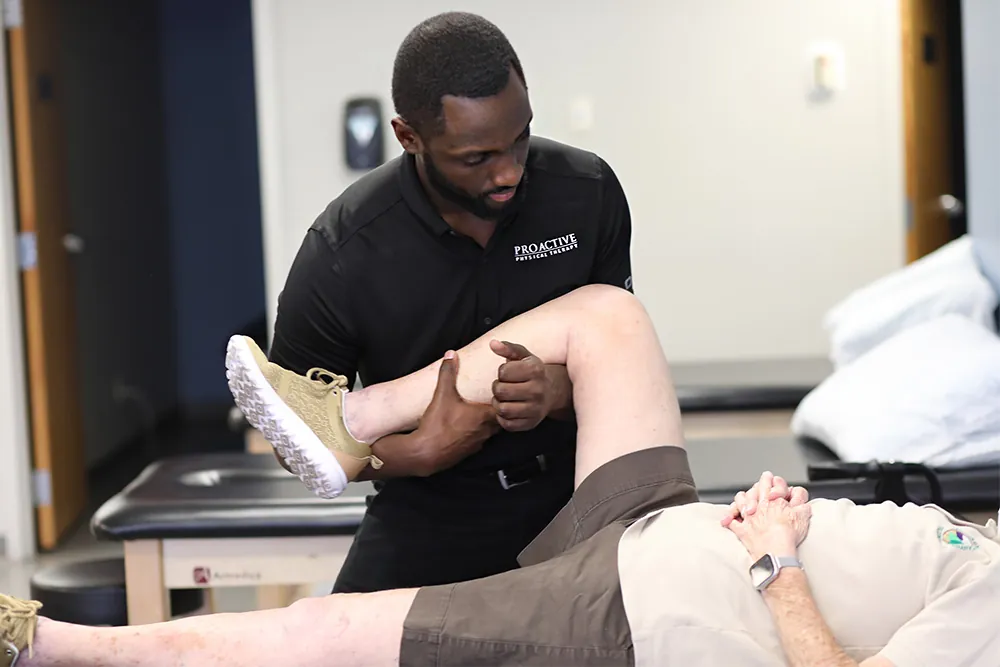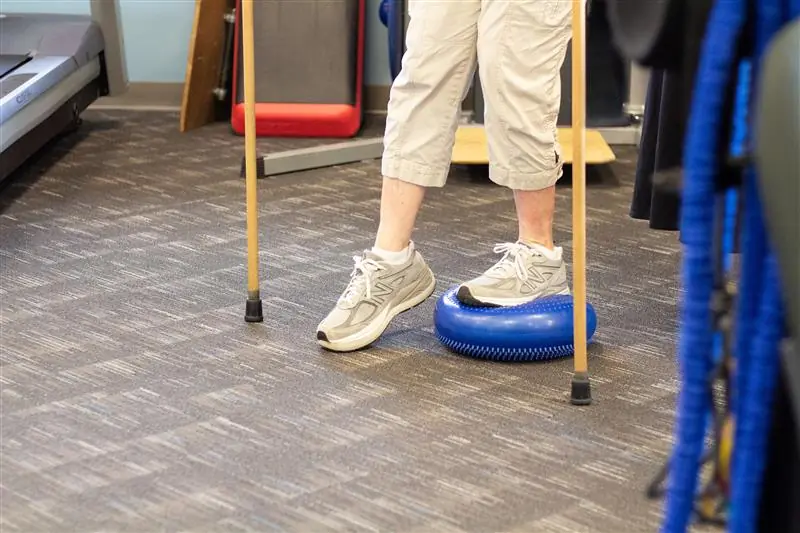by Andre Porterfield, PT, DPT | Green Valley
There are a few key signs that you are ready for knee replacement surgery. Those indicators include constant knee pain and an inability to perform everyday activities such as walking, climbing stairs, or even lying down without pain. Knee replacement surgery allows patients to resume their favorite activities without pain. For those who put off their surgery too long, a successful knee replacement surgery means they can finally resume their favorite activities they gave up on years ago. However, a strong recovery and rehabilitation plan is key to a successful outcome after knee replacement surgery. At ProActive Physical Therapy, our Tucson, AZ offices support your rehabilitation, providing you with the knee treatments and exercises you need to get back in action as soon as possible.
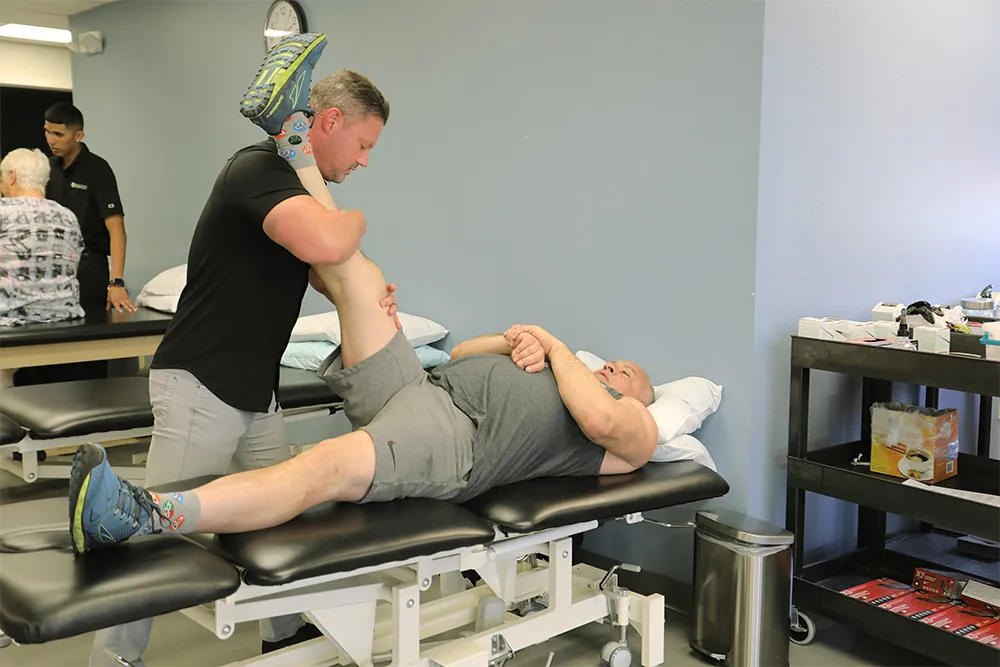
What to Expect After Knee Replacement Surgery: The First 24 Hours
Not all patients require an overnight stay in the hospital after knee replacement surgery. However, if you need to stay in the hospital, it will likely be for only one night.
Continuous passive motion devices (CPMs) have diminished over the years. Although once considered effective, many surgeons are now opting for other methods for early ROM in the first 24 hours after TKA surgery. Per the Clinical Practice Guidelines provided by the American Physical Therapy Association for the management of total knee arthroplasty, the usage of continuous passive motion devices for an uncomplicated TKA surgery is not indicated. Early ambulation of the patient’s tolerance and early ROM activities progress as the patient’s tolerance level improves the current best practice for managing TKA within the first 24 hours.
If your pain is under control, a physical therapist will help you stand up and take a few steps, possibly with an assistive device like a walker or cane. Patients who begin moving and bearing a little weight on their new knee tend to recover from their joint replacement sooner than those who don’t.
You’ll also receive instructions on performing specific tasks like bathing, dressing, and using the bathroom post-surgery. In addition, most physicians prescribe medications that will reduce swelling and side effects while managing pain.
What to Expect After Knee Replacement Surgery: Day 2
On your second day of knee replacement surgery recovery, you will walk for brief periods using an assistive device. After that, you can expect your activity levels to increase gradually throughout your recovery.
Depending on the surgeon’s dressings, you may be able to shower the day after your surgery. However, regardless of the dressings used, you should not soak your incision for three to four weeks after your knee replacement surgery.
Post-op day two rehab will continue focusing on improving ROM within the knee and overall tolerance with walking activities. After knee replacement surgery, scar tissue will begin to form. If early motion is not achieved, scar tissue can mature and become more difficult and painful to break up. Hospitals are now providing patients with exercise programs designed to encourage early ROM from day one. Activities include heel slides and seated active knee extension, depending on the clinical reasoning of your evaluating Physical Therapist.
At this point, you’ll work on achieving full knee extension. You’ll also work to slowly increase your ability to bend the knee by about ten degrees or more if you’re able.
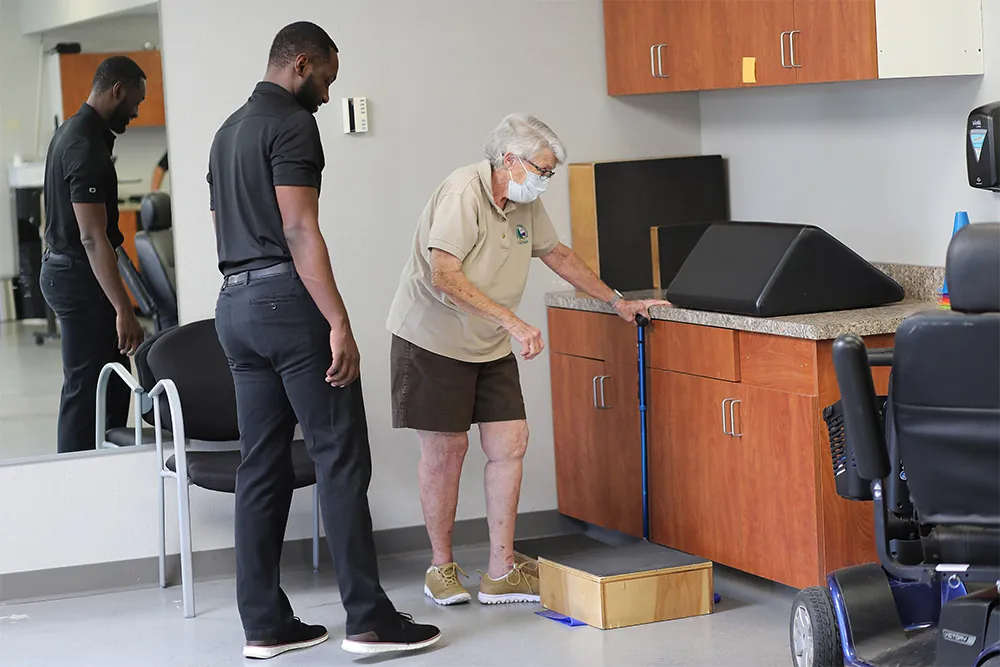
What to Expect After Knee Replacement Surgery: Week 1
In the first week after your surgery, you’ll grow accustomed to walking short distances, with or without an assistive device. You’ll also work to bend your knee further, with or without a CPM machine.
You’ll begin physical therapy in earnest at this point in your recovery. Your physical therapy sessions will focus on performing everyday tasks to minimize pain and build strength and flexibility in your new joint.
By day three post-surgery, your physician will begin transitioning you to a lower dose of pain medication. You should be able to perform most basic tasks independently or with limited use of assistive devices. These activities include:
- Standing
- Taking longer walks
- Using the restroom
- Dressing and bathing
- Climbing up and down stairs with assistance
However, every patient’s recovery is different. For example, the knee replacement recovery time for elderly patients is often longer than for younger patients who were more active before surgery.
What to Expect After Knee Replacement Surgery: Week 3
By your third week of recovery from your knee replacement surgery, you should be able to walk or stand for ten minutes or more. As a result, your need for pain medications should be far less, and you may not need assistive devices anymore.
If you’re diligent about your recovery, at this point, you should be able to bend your knee to at least 90 degrees and fully extend your leg to a straight position.
What to Expect After Knee Replacement Surgery: Weeks 4-6
By weeks four to six post-surgery, you should feel dramatically better. At this point, most patients can resume driving with their surgeon’s approval and can return to work if their job doesn’t require extensive physical exertion.
Throughout this period, patients who maintain their physical therapy will benefit from increased ability to perform everyday tasks, little need for an assistive device, and increased range of motion.
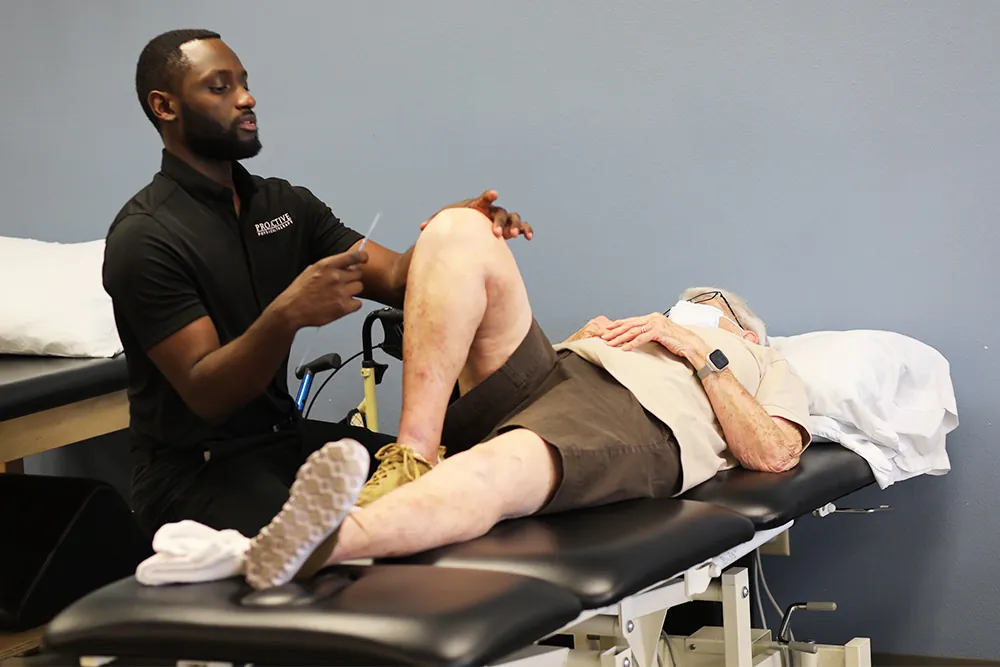
What to Expect After Knee Replacement Surgery: Weeks 7-11
You should continue physical therapy to gain strength and range of motion during this period after your surgery.
A reasonable goal for maximum bend after knee replacement is at least 120 degrees — the range of motion that allows patients to get in and out of a car or ride a bike. However, patients may reach around 115 degrees at this stage.
Physical therapy is critical at this recovery point, as committing to exercises and strength-building allows for a faster return to normal activities and better performance in your replacement knee for the long term.
At this point, patients should be able to return to low-impact exercises, such as swimming, walking, and bicycling.
What to Expect After Knee Replacement Surgery: Week 12 and Beyond
For physical therapy, the knee replacement rehab timeline is about 12 weeks. At this point, patients who have been diligent about physical therapy should reach a full range of motion, strength, and stability in their new knee.
When looking at how long to recover from knee replacement, patients should expect three months for most activities. However, a replacement knee can take six months to a year to achieve full strength and resilience.
Make Your Rehabilitation Plan with ProActive Physical Therapy
The expert team at ProActive Physical Therapy offers convenient locations, skilled therapists, and multiple specialties that complement your recovery process.
ProActive Physical Therapy’s offices throughout the Tucson, AZ, area provide patients with pre- and post-surgical physical therapy to experience the relief of a strong, stable new knee.
Call or book an online appointment to learn more about knee replacement physical therapy with ProActive Physical Therapy.

